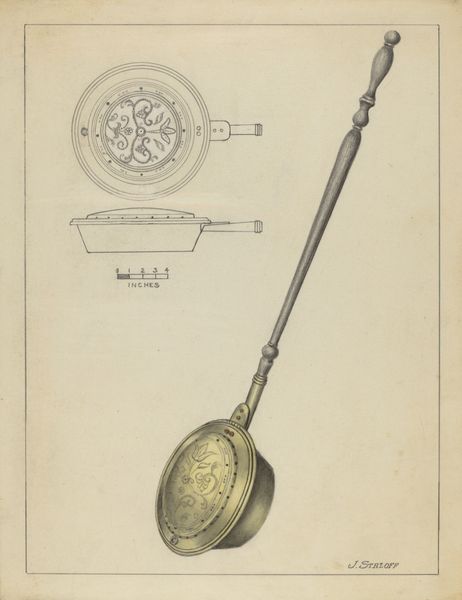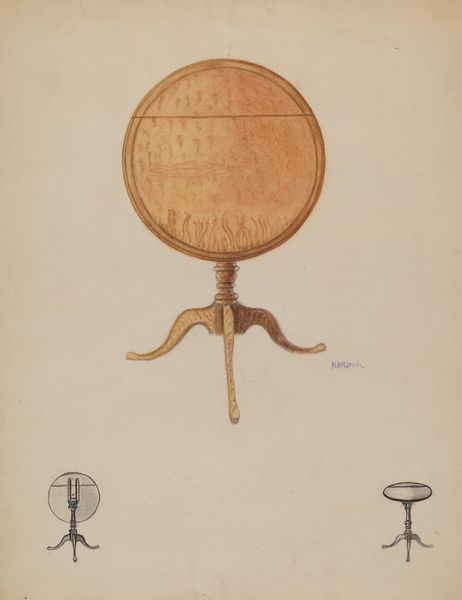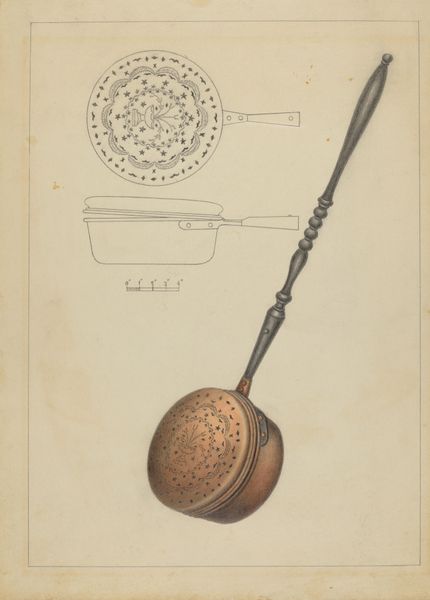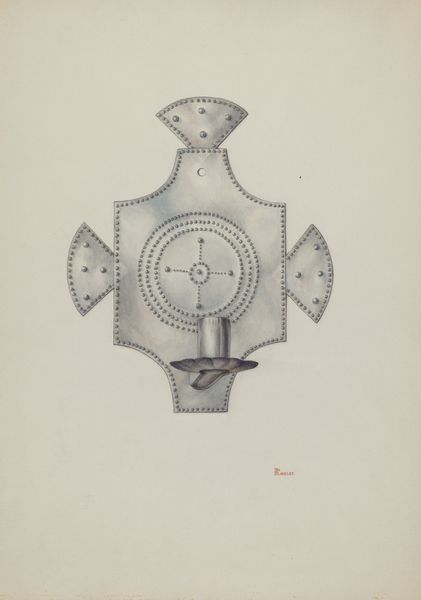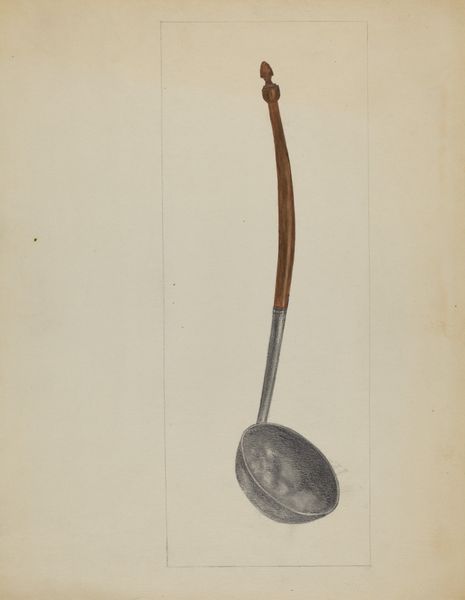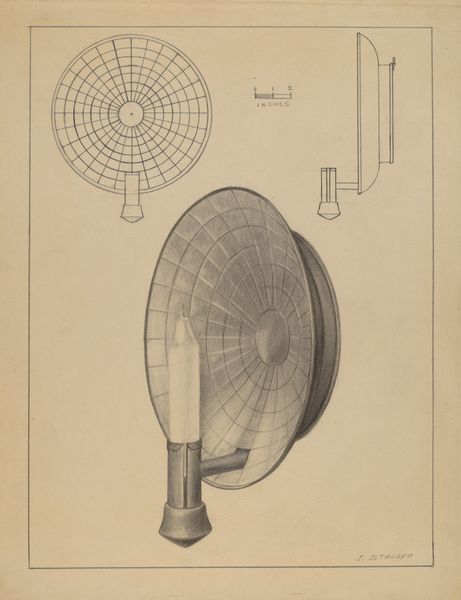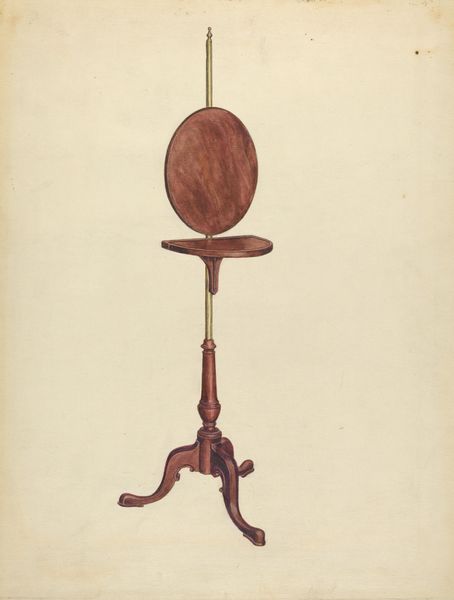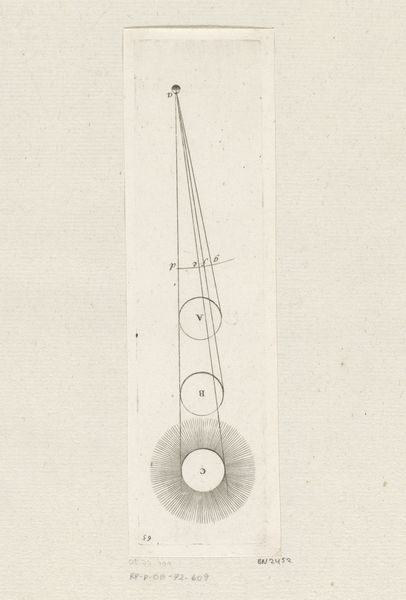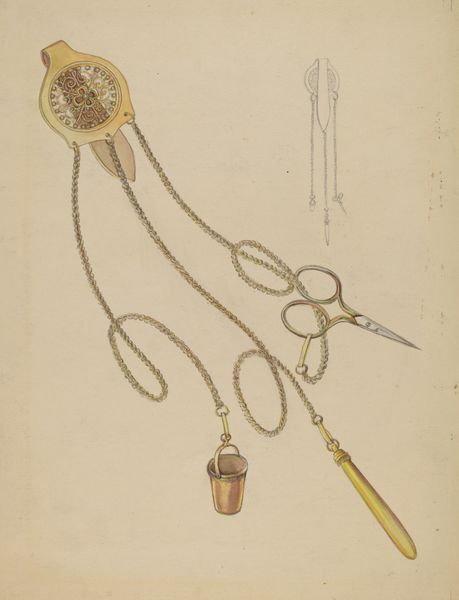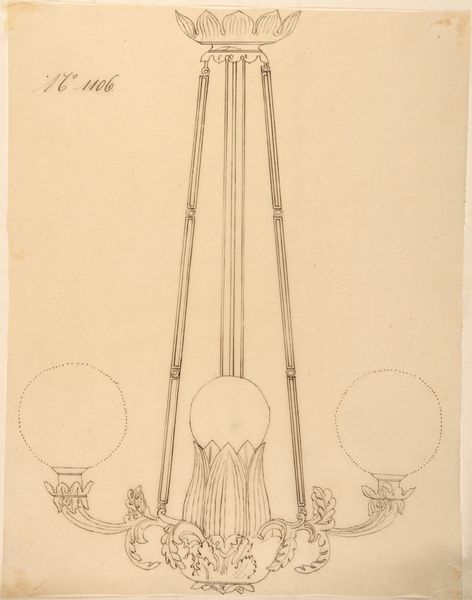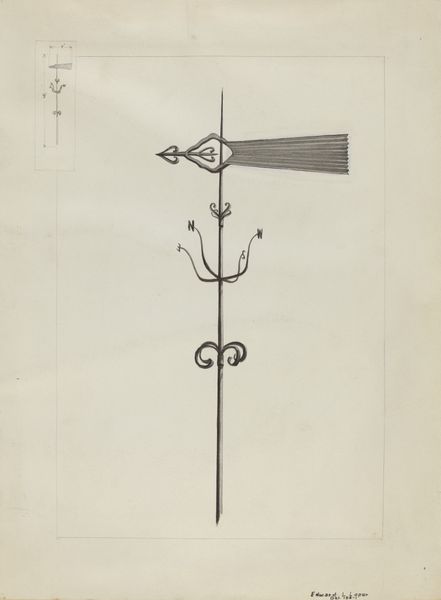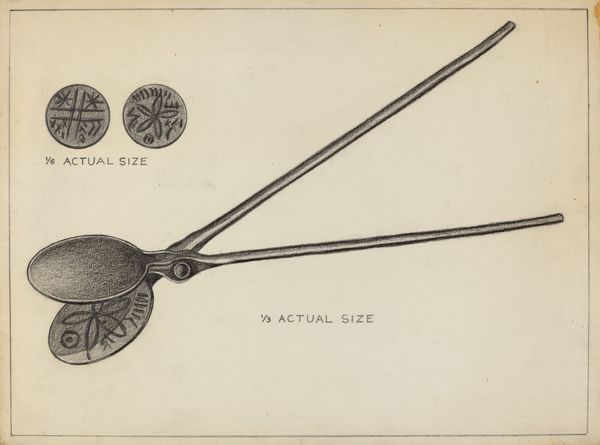
drawing, pencil
#
drawing
#
pencil
#
watercolor
Dimensions: overall: 30.5 x 23.1 cm (12 x 9 1/8 in.)
Copyright: National Gallery of Art: CC0 1.0
Curator: I am immediately struck by its elegance—the way a simple kitchen utensil is rendered with such care. It has a quiet dignity, almost meditative in its stillness. Editor: We are looking at "Skimmer," a drawing completed circa 1937 by Herbert Marsh. The piece uses graphite and possibly some watercolor, and, tellingly, meticulously renders an everyday kitchen tool. The image reminds me of a mechanical drawing, of some obsolete patent that we see lingering like the past itself. Curator: Yes, exactly! There's an antique quality. One almost feels as if you're gazing not just at an object but into someone's history, perhaps a long-lost relative’s toolkit! There is a curious charm that elevates it beyond just being a household implement. Editor: Absolutely. Marsh isn't just depicting a skimmer; he's documenting a piece of domestic technology and culture. He might be revealing a certain socioeconomic element as well because skimmers weren't as ubiquitous in every kitchen as say, a pot. Curator: That’s interesting. You perceive it as a symbol. Whereas to me, those small, precisely placed perforations almost read as star constellations. It's not utilitarian in my imagination. It sparks something whimsical. Editor: Maybe that intersection – utility presented with artistry– reflects the era's attempt to reconcile industry with a touch of grace amid harsh times? The subtle coloration speaks of frugality and practicality as well. Curator: I love how an item can evoke such layered discussions and perspectives. Seeing an everyday tool as an art piece does shift your perception; it allows one to find beauty and contemplation where we never imagined. Editor: Indeed. Marsh’s quiet act of documentation transforms what might have been discarded into something valuable and worthy of preservation. A small sketch rescues this object from time itself, and asks what histories everyday life really is, at its core.
Comments
No comments
Be the first to comment and join the conversation on the ultimate creative platform.
